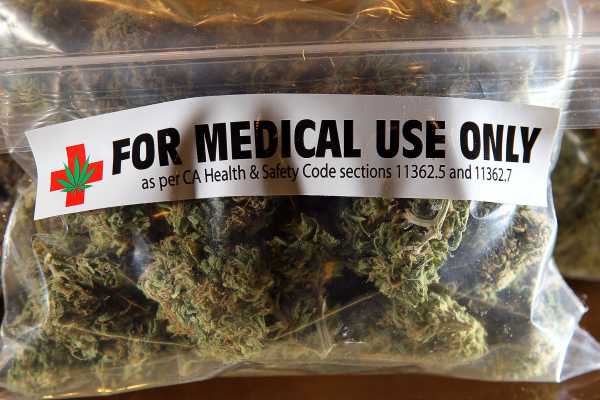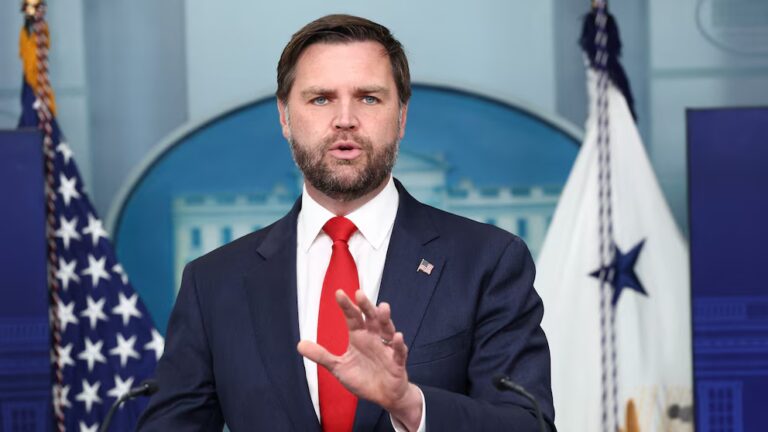
Whenever I write anything about the solutions to the opioid epidemic, there’s a question I almost always get from readers: What about medical marijuana?
The question comes in reference to a growing body of research — which I’ve written about before — indicating that the legalization of medical marijuana may lead to a drop in drug overdose deaths. The idea: Marijuana is an effective painkiller, so it could be a substitute for some opioid painkillers that have led to the current overdose epidemic. Because marijuana doesn’t cause deadly overdoses and is less addictive than opioids, replacing some use of opioids with pot could prevent some overdose deaths.
This idea has been backed by some major politicians. Last week, House Minority Leader Nancy Pelosi said at a press conference, “Doctors say, ‘Don’t tell us how many pills we can prescribe.’ Well, maybe we should. Others say there are other ways to relieve stress and relieve pain and that you don’t need opioids in the first place. We are too reliant to transition from them. Marijuana, yoga, all kinds of other things that are homeopathic but are not addictive in this dangerous way.”
The concept has also gotten a lot of press coverage, garnering headlines ranging from CNN’s “Getting off opioids with medical marijuana: Patients turn to pot over pills” to the San Diego Union-Tribune’s “Why medical marijuana may be the answer to the opioids epidemic.”
Some drug policy experts, however, are cautious. While the studies so far are promising, they are not definitive, showing weak correlational evidence rather than conclusive proof. More importantly, we have much stronger evidence for other policy ideas that could help address the opioid epidemic but have not been implemented on a nationwide scale.
In other words, medical marijuana could help, but it’s almost certainly not “the answer to the opioids epidemic” — as the Union-Tribune editorial board claims — and we shouldn’t lose sight of the better answers.
There’s some evidence for medical marijuana reducing opioid deaths
There have been some studies suggesting that medical marijuana could help reduce opioid overdose deaths.
For one, the best review of the research to date about marijuana’s health effects, from the National Academies of Sciences, Engineering, and Medicine, found that there’s “conclusive evidence” for marijuana as a treatment for chronic pain. At the same time, there’s evidence questioning whether opioids really are more effective at treating chronic pain compared to alternative treatments, suggesting that there’s a lot of room to substitute marijuana, at least for some patients.
One potential wrinkle: We already have a lot of non-opioid pain treatments. As Stanford University pain specialist Sean Mackey previously told me, there are 200-plus non-opioid pain medications, not to mention nonpharmacological approaches. So marijuana isn’t providing something entirely new here if it’s used for pain treatment.
Perhaps the most compelling evidence to date, though, comes from a recent study by David Powell and Rosalie Pacula of the RAND Corporation and Mireille Jacobson of the University of California Irvine, who looked at how medical marijuana legalization — particularly in states with the most access to medicinal cannabis — affected opioid-related deaths. They concluded, “These findings suggest that broader access to medical marijuana facilitates substitution of marijuana for powerful and addictive opioids.”
The researchers looked at both treatment admissions for opioid pain reliever misuse and state-level opioid overdose deaths. They found relative decreases in misuse and deaths in states with medical marijuana dispensaries, but they didn’t find significant decreases in states that allow medical marijuana without dispensaries. So the big factor in reducing misuse and deaths seemed to be not just medical marijuana legalization but also access to medicinal pot through dispensaries.
The study also found that legal opioid painkiller distribution didn’t seem to decline in states with pot dispensaries, which, according to the researchers, suggests people are replacing illegally obtained opioids with pot. But the overall result is still less misuse and fewer deaths.
“In short, our findings that legally protected and operating medical marijuana dispensaries reduce opioid-related harms suggests that some individuals may be substituting towards marijuana, reducing the quantity of opioids they consume or forgoing initiation of opiates altogether,” the researchers wrote.
The effect seemed to shrink after 2010 when the Obama administration encouraged states to pass stricter regulations on medical marijuana, therefore making it less accessible. And the effect could shrink more as the opioid crisis becomes less about painkillers and more about heroin and fentanyl, which has been increasingly true over the past few years.
Other studies have produced similar results too, so this isn’t just one outlier study.
The evidence isn’t very strong, though
There is a big caveat to the research: These studies show correlation, not causation. There could be other factors going on that these studies aren’t picking up. For example, maybe the states with more relaxed marijuana laws are also the states that are more likely to have the best general policy responses to the opioid epidemic.
This is a key reason the editors of the scientific journal Addiction have cautioned against overinterpreting the marijuana and opioid studies so far. “Ice cream sales and the number of drownings are correlated positively, but eating ice cream does not cause drownings. Rather, sales of ice cream are higher in the warmer summer months when more people go swimming,” they wrote in a recent editorial.
A similar thing could be going on with marijuana and opioids if the states more likely to pass lax medical marijuana laws are also more likely to enact, say, policies boosting access to addiction treatment. But the studies so far have not controlled for access to evidence-based treatment or other policies — good or bad — that can affect opioid overdose deaths.
“Given these limitations of the evidence, it is premature to recommend the expansion of access to medical cannabis as a policy to reduce opioid overdose risks in the United States and Canada,” the editors concluded.
Not everyone agrees. Even with these limitations in mind, Mark Kleiman, a drug policy expert at New York University’s Marron Institute, wrote that he finds the research so far persuasive.
Acknowledging that the studies so far are not definitive, Kleiman wrote: “If you asked me to bet on whether easing access to cannabis in a given state was likely to reduce the rate of increase in opioid overdoses in that state, I’d want very long odds to bet on ‘No.’ Since, if the substitution effect is real, waiting costs lives, I think that’s a strong argument for going ahead with liberalizing cannabis access, whether under the guise of ‘medical marijuana’ or (as I’d now prefer for other reasons) with frank legalization for adult use.”
As someone who’s covered drug policy for years and read a lot of these studies, I agree with Kleiman: It does look like marijuana legalization likely has some positive effect. But it’s not totally proven.
We have much better evidence for other policies
While the evidence for medical marijuana isn’t definitive, there is much, much stronger evidence for other interventions in the opioid crisis.
First, there are anti-addiction medications like buprenorphine and methadone. Studies show that these medications reduce the all-cause mortality rate among opioid addiction patients by half or more and do a far better job of keeping people in treatment than nonmedication approaches. In France, the government expanded doctors’ ability to prescribe buprenorphine in 1995 to confront an opioid epidemic — and overdose deaths declined by 79 percent from 1995 to 1999, according to a 2004 study published in the American Journal on Addictions.
But access to these medications — and treatment in general — is bad. According to a 2016 report by the surgeon general, only 10 percent of people in the US with a drug use disorder get specialty treatment. One reason for that low rate is a lack of supply to meet demand: The White House’s opioid commission, for example, found that 85 percent of US counties have no specialty opioid treatment programs that provide medications for opioid addiction.
An evidence-based approach to tackle the opioid crisis would significantly boost access to treatment. Experts estimate that achieving this could cost tens of billions of dollars a year over several years. But Congress has only appropriated limited-time funding boosts here and there to address the crisis — none of which add up to the tens of billions or anything close to that amount.
Another proven intervention is needle exchanges. Studies from independent researchers, the World Health Organization, and the Centers for Disease Control and Prevention have concluded that needle exchanges reduce the spread of diseases that can infect people through injection drug use (such as HIV and hepatitis C) and help connect drug users to treatment — all without increasing drug use, as opponents fear.
While more needle exchanges have opened in recent years in response to the opioid crisis, a lot more work could be done. Josh Katz reported in the New York Times: “According to the North American Syringe Exchange Network, 333 such programs operate across the country, up from 204 in 2013. In Australia, a country with less than a tenth as many people, there are more than 3,000.” Meanwhile, some jurisdictions — including counties in Indiana — have actually shut down needle exchanges, citing debunked concerns about enabling more drug use through the programs.
This is only the tip of the iceberg. As I explained before, experts have many more evidence-based ideas for addressing the opioid epidemic. The problem is the political and legislative response in actually implementing these ideas has long lagged behind the science — so the opioid crisis continues, killing tens of thousands every year.
Again, it’s not that medical marijuana couldn’t help address the epidemic. The evidence does suggest, to me, that it could. But if we have ideas with more evidence behind them, maybe we should try those first before getting too caught up in a scheme with much weaker evidence behind it.
Sourse: vox.com






